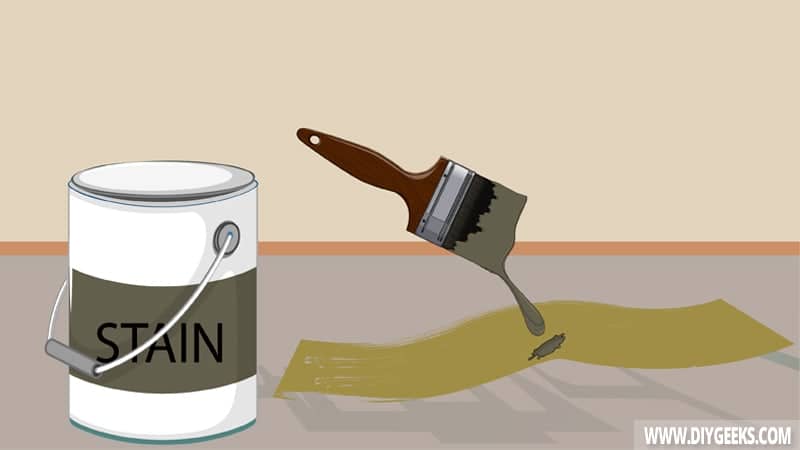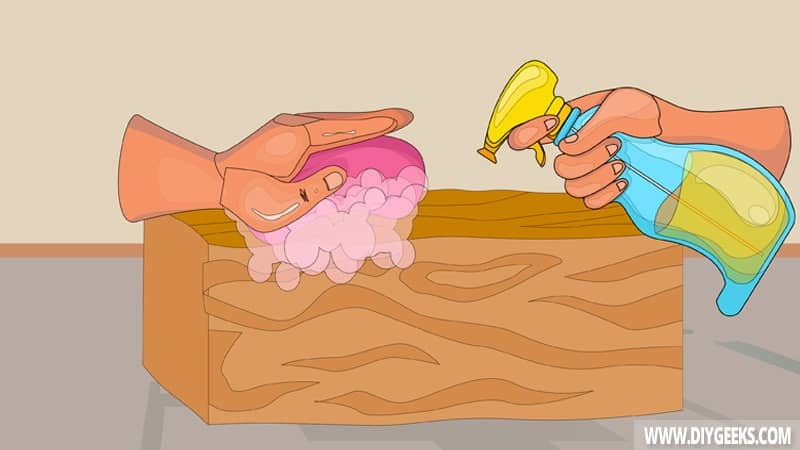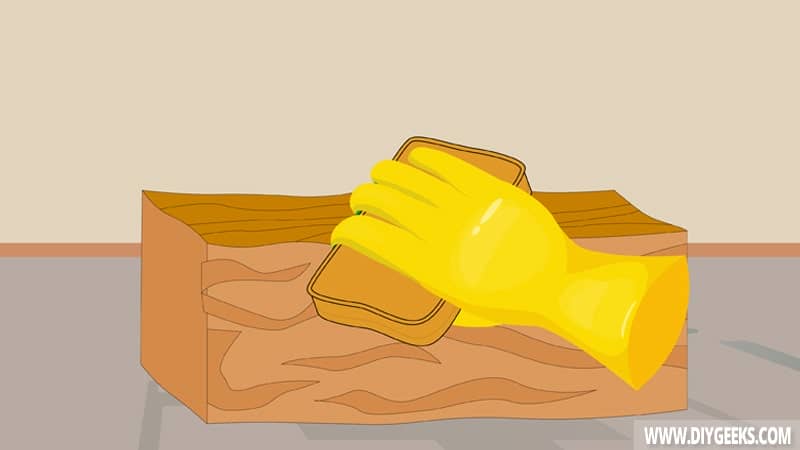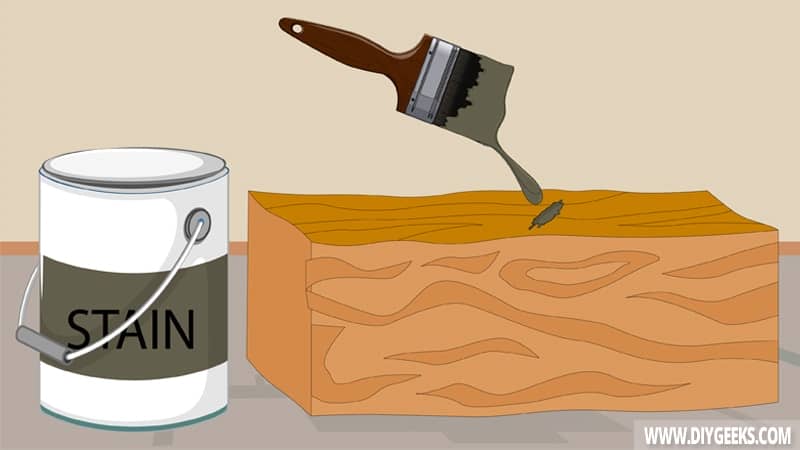You can stain over stain to refresh or alter the wood’s appearance. But, both wood stains (old & new) must have the same solvent (water or oil) and the existing finish should be sealed.
To stain over stain, find the existing wood stain type, remove the old stain (optional), sand the finish, and apply the wood stain.
You don’t need to remove the old stained finish if it doesn’t have a glossy or moisture-resistant coating over it.
Can You Stain a New Color Over Old Stain?

You can stain a new color over old stain, but you must apply multiple coats to prevent bleed-through. The old coating will bleed-through if the new coating has a lighter or deeper color shade, but applying multiple coats will prevent that.
To get a lighter color shade finish, sand (or remove) the dark finish, apply 1-2 coats of primer, then apply a lighter color shade coat.
The dark-shaded finish will bleed through if you apply a light wood stain coat directly over it. The darker the existing finish is, the more coats you need to prevent bleed-through.
You can apply pigmented wood stain over a stained surface without having to remove it. Pigmented wood stains have enhanced colors (with more pigments) and aren’t as transparent as regular stains. So, you can apply them over stained wood to change the color without removing the existing finish.
However, if the existing finish is also a pigmented wood stain, you must remove or sand it before changing its color.
Do You Have To Remove Old Wood Stain Before Re-Staining?
You don’t have to remove old wood stains before re-staining as it doesn’t have a glossy or moisture-resistant layer that repels new coatings. A new wood stain coating will directly stick over an old stain coating.
You must remove the old wood stain coating only if it is sealed or painted over, or if it’s wet, sticky, or peeling off. A sealed finish will have a glossy and moisture-resistant topcoat that will prevent a new coating from sticking.
A wet, sticky, or peeling-off wood stain coating will prevent a new coating from sticking over it. It’s recommended to remove it first and then apply a new coating. To remove wet, sticky, or peeling off wood stain, use a paint stripper.
The new coating will turn stick (or tacky) and peel off if you apply it over a sealed finish. But, if the old wood stain finish is even, has no bumps, and isn’t sealed, then you can apply a new coating directly over it.
How To Stain Over Old Stain?
To stain over old stain, do the following things.
- Find the Existing Wood Stain Type.
- Remove the Old Stain (Optional).
- Sand the Finish.
- Apply the Wood Stain.
The tools you need for this project are listed below.
- A paint stripper
- New stain
- Rags
- Medium and fine-grit sandpaper
- A large drop sheet
- Paintbrushes
- Painter’s tape
1. Find the Existing Wood Stain Type

To find the existing wood stain type, damp a rag with rubbing alcohol and wipe the finish. The wood stain is water-based if it gets removed by rubbing alcohol. If the stain isn’t removed, it’s oil-based or sealed.
2. Remove the Old Stain (Optional)

If the existing wood stain finish is oil-based or sealed, you must remove it before re-coating it. Oil-based or sealed wood stain finishes create a low glossy finish that doesn’t allow proper adhesion.
To remove the existing wood stain finish, do the following things.
- Apply a paint-stripping compound over the surface
- Wait a few minutes.
- Scrape it with a paint scraper.
3. Sand the Finish

Sand the finish with fine-grit sandpaper (220-grit) to remove surface imperfections and bumps, and allow the new coating to penetrate and adhere to the surface better.
4. Apply Wood Stain

Apply two (2) wood stain coats over the finish using a paintbrush, foam roller, or sprayer. Wait until one coat dries, wipe the excess, and apply the second coat.
If you want to get a darker finish, seal the finish with a Gel stain or use it instead of a regular stain. If you want a lighter or transparent finish, use varathane or polyurethane.
Which Wood Stain Types Can You Re-stain?
The wood stain types you can re-stain are listed below.
Can You Apply Oil-Based Wood Stain Over Water-Based Stain?
You can apply oil-based wood stain over water-based stain as it has a dry texture finish and not a glossy finish that repels liquid.
But, the coating must be dry, clean, and sanded before applying oil-based over it. If the surface isn’t dry or clean, the finish will turn sticky.
Can You Apply Water-based Wood Stain Over Oil-Based Stain?
You can’t apply water-based wood stain over oil-based stain because it has a glossy finish that prevents proper adhesion.
Can You Re-stain Deck Stain?
You can’t re-stain deck stain as it’s formulated with additives that make its finish moisture and weather-resistant. Its finish is hard and impermeable, so a new coating won’t penetrate or stick over it.
You must remove the existing finish before re-staining it.
Can you Re-stain Stained Concrete?
You can’t re-stain stained concrete as its finish is formulated with etching (or acidic) additives that aren’t compatible with most finishes. You can only re-stain it with an acidic or water-based stain.


